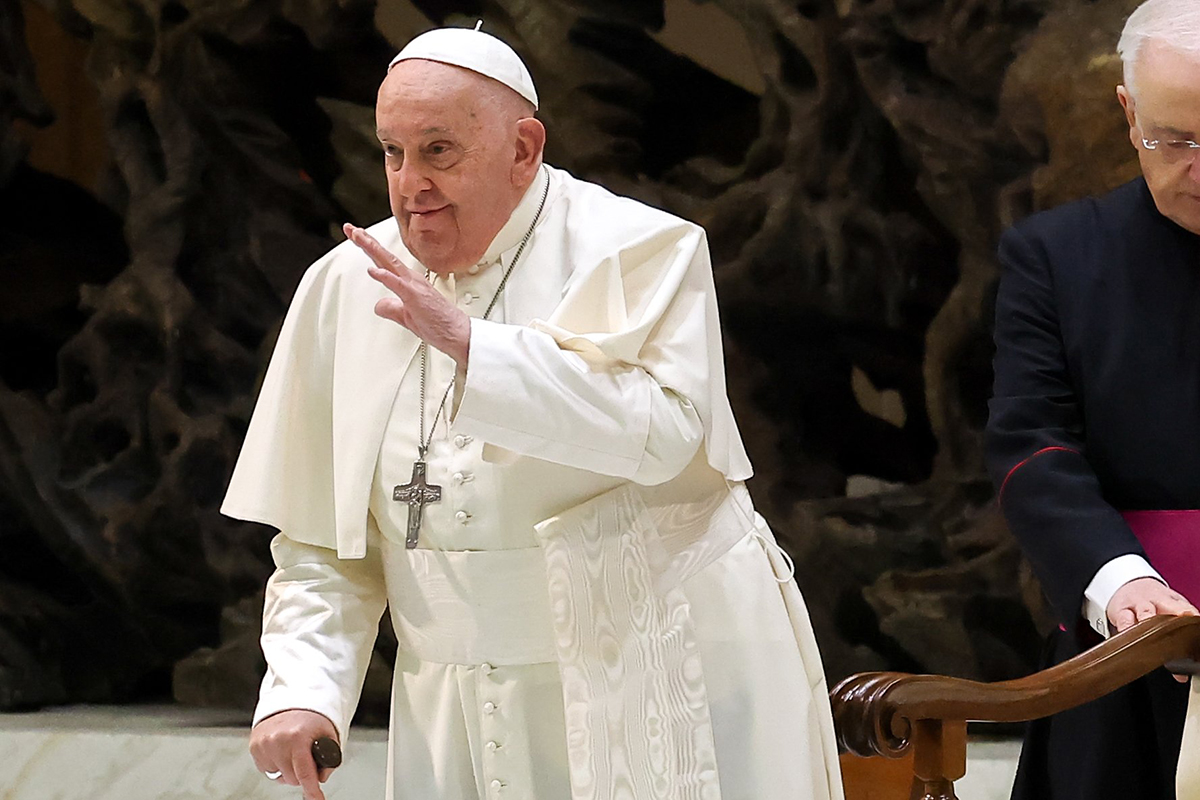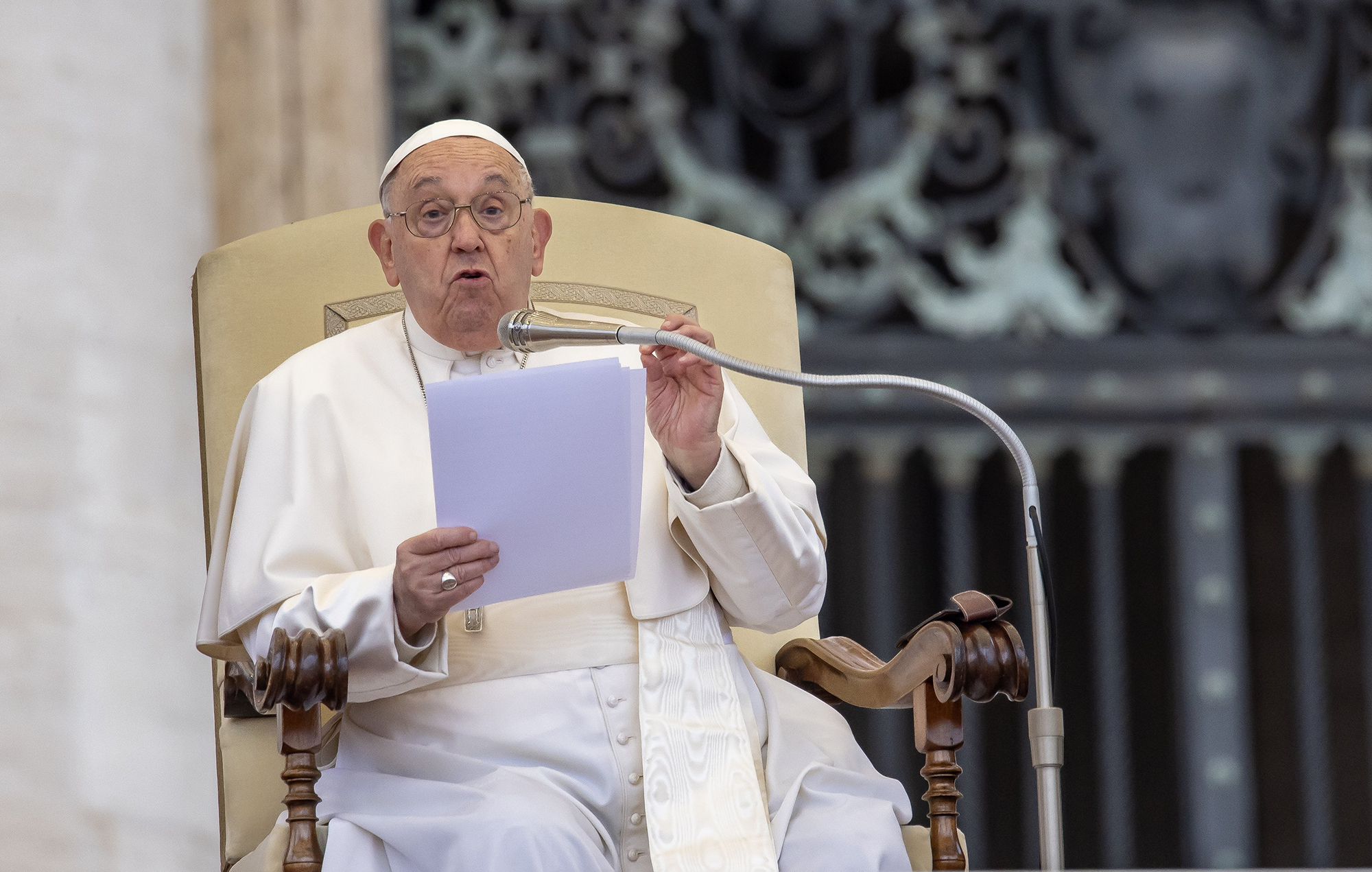Message from ‘heart of Asia’: Pope’s words go beyond Mongolian borders

On visit to Mongolia, Pope Francis encouraged the nation’s tiny Catholic community to grow in faith and charity
VATICAN CITY — Being a Catholic does not destroy or replace a person’s culture, and wanting to share the Gospel message does not mean wanting to take someone’s allegiance away from their nation.

Visiting Mongolia Sept. 1-4, Pope Francis encouraged the nation’s tiny Catholic community to grow in faith and charity, but the visit also was designed to reassure the government that it has nothing to fear from the Catholic missionaries who arrived in the country in 1992.
The pope’s speeches in Ulaanbaatar, the national capital, repeatedly referenced positive contacts between Mongolians and the Vatican going back to 1200s when Pope Innocent IV sent an emissary to Güyük Khan, the ruler of the Mongol Empire and grandson of Genghis Khan.
Pope Francis used the ger, the traditional round house of the nomadic Mongolians, as symbols of warmth and unity. And he made repeated references to the “big sky” of Mongolian poetry as a sign of the Mongolian people’s constant attention to the transcendent.
At the end of Mass Sept. 3, the pope praised Mongolians as “good Christians and honest citizens,” and told them to “go forward, gently and without fear, conscious of the closeness and the encouragement of the entire Church, and above all the tender gaze of the Lord, who forgets no one and looks with love upon each of His children.”
Earlier, meeting with the missionaries in the Cathedral of Sts. Peter and Paul, Pope Francis told them: “Closeness, compassion and tenderness: Treat people like that, personally caring for them, learning their language, respecting and loving their culture, not allowing yourselves to be tempted by worldly forms of security, but remaining steadfast in the Gospel through exemplary moral and spiritual lives.”
And while the focus was on Mongolia and its 1,400 Catholics, China — and perhaps Vietnam — was never far from Pope Francis’ mind.

The Catholic Church is registered as a “foreign NGO” in Mongolia, not as a church. Individual parishes are registered separately. Missionaries receive visas that must be renewed each year. And for every foreign missionary granted a visa, the Church must hire at least five Mongolians.
The bigger challenge, Catholic missionaries told reporters covering the trip, is convincing Mongolians that Catholic missionaries are not some kind of advance team preparing for a Western invasion of their country.
Blessing the new House of Mercy in Ulaanbaatar Sept. 4, the pope insisted that while Catholic charitable and social service activities have attracted Mongolians to the Church, the service is motivated by love alone.
Salesian Brother Andrew Tran Le Phuong, director of the House of Mercy, told the pope the facility would offer a shelter for vulnerable people, especially women and children; a first aid center for the homeless; free laundry and shower facilities; a place where returning migrants and others in need could go for help in connecting to services; and a meeting place to coordinate the variety of Catholic charities operating in the city.
Pope Francis used his speech to the charity workers and volunteers “to reject certain myths,” including one about why Catholics offer education and health care, feed the hungry, shelter the homeless and care for widows and orphans.
A big myth, he said, is that “the Catholic Church, distinguished throughout the world for its great commitment to works of social promotion, does all this to proselytize, as if caring for others were a way of enticing people to ‘join up.’ No!”

“Christians do whatever they can to alleviate the suffering of the needy because in the person of the poor they acknowledge Jesus, the son of God, and, in Him, the dignity of each person, called to be a son or daughter of God,” the pope insisted.
Similar suspicions exist in China, and to a lesser degree, Vietnam.
Pope Francis flew over China early Sept. 1 before landing in Ulaanbaatar and again Sept. 4 on his way back to Rome, sending courtesy telegrams to Chinese President Xi Jinping, thanking him for allowing the papal plane to enter Chinese airspace and offering his blessings and good wishes to the nation.
Throughout his stay in Mongolia, Pope Francis was accompanied by bishops from Central Asia and beyond. They included Cardinal-designate Stephen Chow Sau-Yan of Hong Kong and the city’s retired Cardinal John Tong Hon.
At the end of Mass Sept. 3 in Ulaanbaatar’s Steppe Arena, the pope called the two over to him and told the international congregation, “I want to take the opportunity of their presence to send a warm greeting to the noble Chinese people.”
To Chinese Catholics, he added, “I ask you to be good Christians and good citizens.”
Mao Ning, spokeswoman of the Chinese foreign ministry, was asked about the pope’s remarks at a Sept. 4 news conference.
“We noted the reports,” she said. “China is positive toward improving the relations and we are in contact and communication with the Vatican.”
Bishops and priests from mainland China were not permitted to travel to Mongolia, but several small groups of lay Catholics from China did manage to cross the border to see the pope.
A large group of Catholics from Vietnam also were present and were hopeful that the pope could visit their country soon.
“I don’t know if I will go, but John XXIV certainly will,” the pope, using the name he has invented for his successor, told reporters on his flight back to Rome.
The Vatican and Vietnam’s communist government have a joint working group focused mainly on bilateral relations and trying to reach an agreement on establishing diplomatic ties. And since the 1990s, a Vatican delegation has made annual visits to Vietnam, getting government approval for the nomination of bishops and seeking permission on issues like establishing or expanding seminaries.
“I am very positive about the relationship with Vietnam; good work has been going on for years,” Pope Francis told reporters on the plane Sept. 4.
“I remember four years ago, a group of Vietnamese parliamentarians came to visit: there was a nice dialogue with them, very respectful,” the pope said. “When a culture is open, there is possibility for dialogue; if there is closure or suspicion, dialogue is very difficult. With Vietnam, the dialogue is open, with its pluses and minuses, but it is open and slowly moving forward. There have been some problems, but they have been resolved.”
Pope Francis and his predecessors have been betting on a similarly patient dialogue with China for decades. And Pope Francis shows no sign of giving up.
“The relationship with China is very respectful, very respectful,” he told reporters on the flight back to Rome. “I personally have great admiration for the Chinese people.”
While some priests and Catholic intellectuals have been invited to teach at Chinese universities, promoting a cultural dialogue, the pope said, “I think we need to move forward in the religious aspect to understand each other better and so that Chinese citizens do not think that the Church does not accept their culture and values” and to dispel the idea that through ties with the pope, the Catholic Church in China “is dependent on another, foreign power.”
“Relations are moving forward,” he repeated.
Pope Francis’ travels
From Sept. 1-4, Pope Francis became the first pope to visit Mongolia. Bordering both China and Russia, Mongolia is home to about 1,450 Catholics, less than 1% of the 3.3 million residents.
For context, 1,450 Catholics is akin to a single mid-size parish in the Archdiocese of St. Louis. But in Mongolia, they’re spread across the world’s most sparsely populated country, which averages just five people per square mile — though nearly half of the country’s population lives in the capital, Ulaanbaatar.
Pope Francis was also the first pope to visit six other countries: North Macedonia (2019), United Arab Emirates (2019), Iraq (2021), Bahrain (2022) and South Sudan (2023). (To be fair, South Sudan has only been an independent country since 2011.)
Pope Francis’ travel by the numbers:
•43 trips trips outside Vatican City and Italy
•60 different countries
•5 countries in North America (including Central America)
•7 countries in South America
•20 countries in Europe
•18 countries in Asia (including the Middle East)
•10 countries in Africa
Average countries per year, across 10.5 years of papacy: 5.71
>> Previous Pontiffs
During his nearly eight years of papacy, Pope Benedict XVI visited 24 different countries: 3 in North America, 1 in South America, 13 in Europe, 3 in Asia, 3 in Africa and 1 in Oceania. Average countries per year: 3
In Pope John Paul II’s 26.5 years as pope, he visited 129 different countries: 17 in North America, 10 in South America, 36 in Europe, 41 in Africa, 20 in Asia and 5 in Oceania. Average countries per year: 4.87
In 1964, Pope Paul VI visited the Holy Land, becoming the first pope to travel outside of Italy since Pope Pius VII was held in captivity by Napoleon in 1809. Throughout his 15-year papacy, Pope Paul VI traveled to 20 countries: 2 in North America, 1 in South America, 3 in Europe, 10 in Asia, 1 in Africa and 3 in Oceania. Average countries per year: 1.33
Pope John Paul I died just a month into his papacy and did not travel outside of Italy in that time.

Africa
•Kenya
•Uganda
•Central African Republic
•Egypt
•Morocco
•Mozambique
•Madagascar
•Mauritius
•Dem. Rep. Congo
•South Sudan
Asia
•Jordan
•Israel
•Palestinian territories
•South Korea
•Philippines
VATICAN CITY — Being a Catholic does not destroy or replace a person’s culture, and wanting to share the Gospel message does not mean wanting to take someone’s allegiance away … Message from ‘heart of Asia’: Pope’s words go beyond Mongolian borders
Subscribe to Read All St. Louis Review Stories
All readers receive 5 stories to read free per month. After that, readers will need to be logged in.
If you are currently receive the St. Louis Review at your home or office, please send your name and address (and subscriber id if you know it) to subscriptions@stlouisreview.com to get your login information.
If you are not currently a subscriber to the St. Louis Review, please contact subscriptions@stlouisreview.com for information on how to subscribe.







